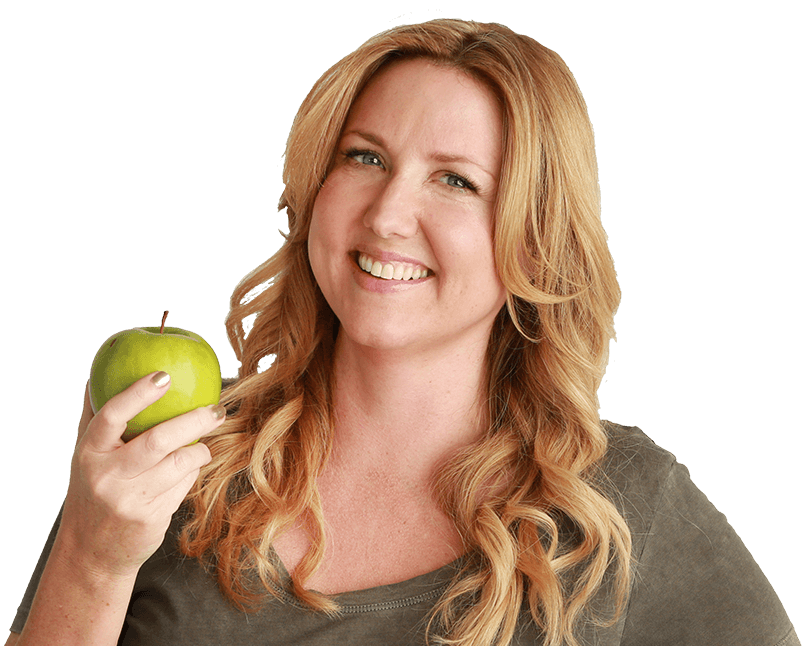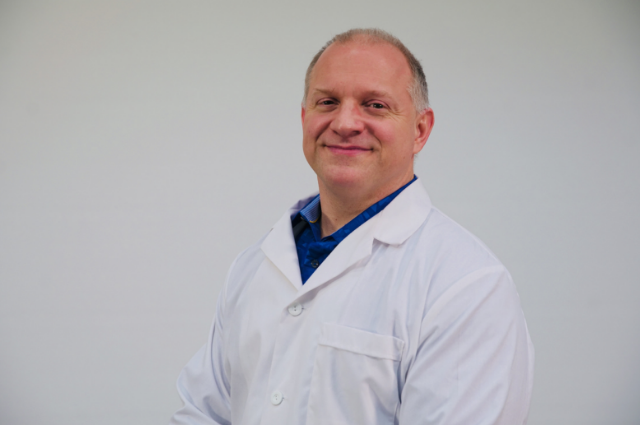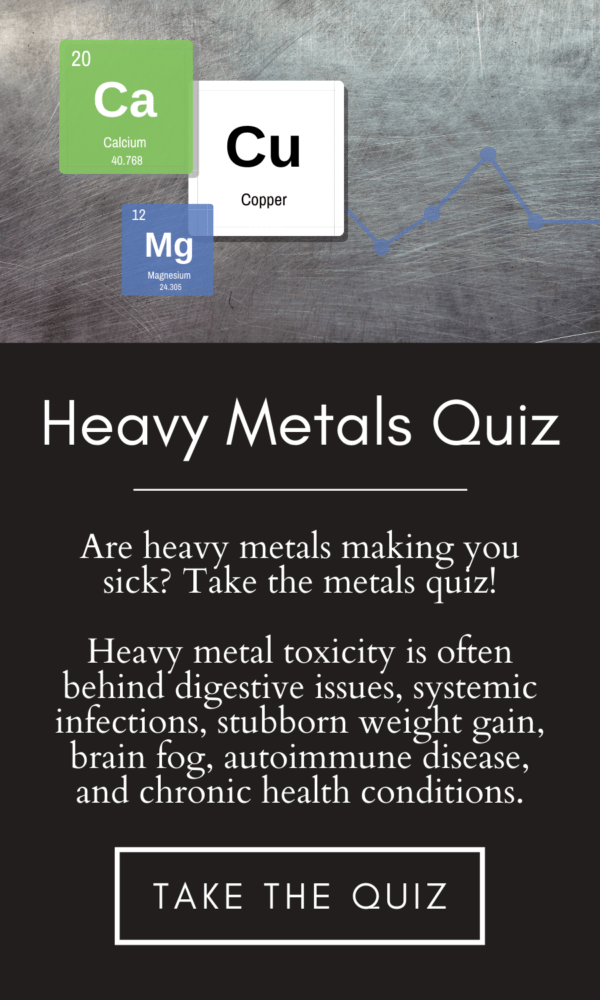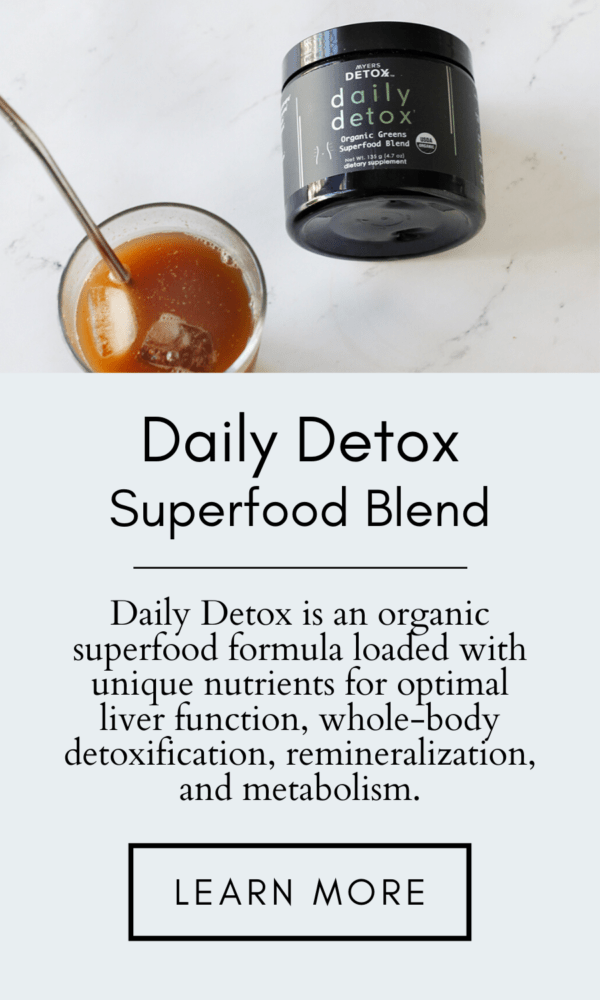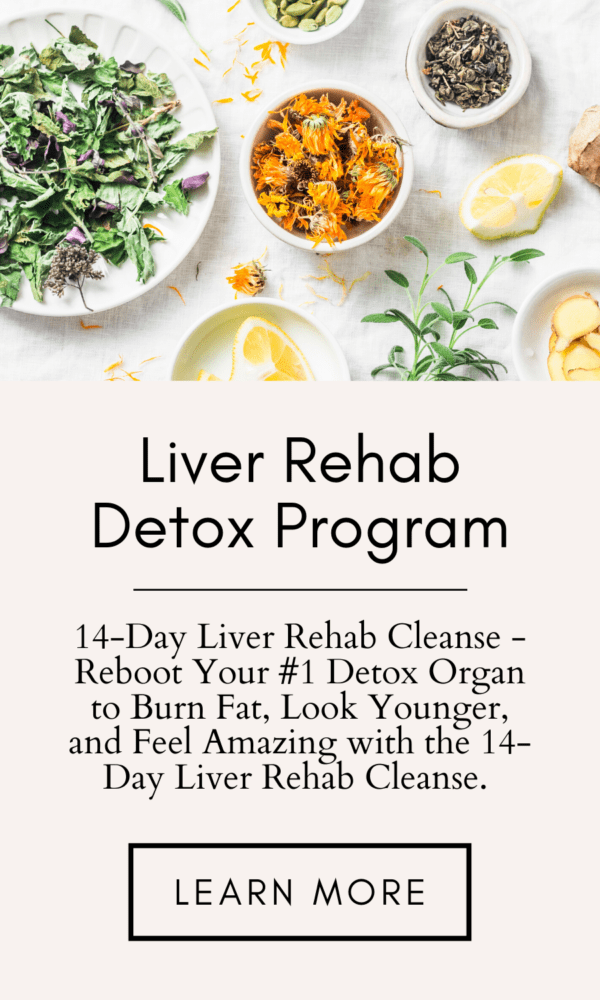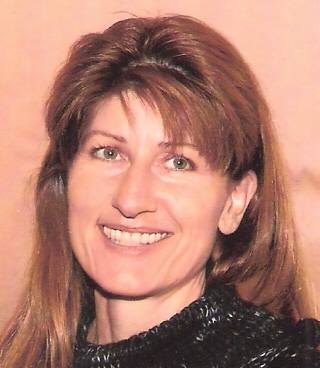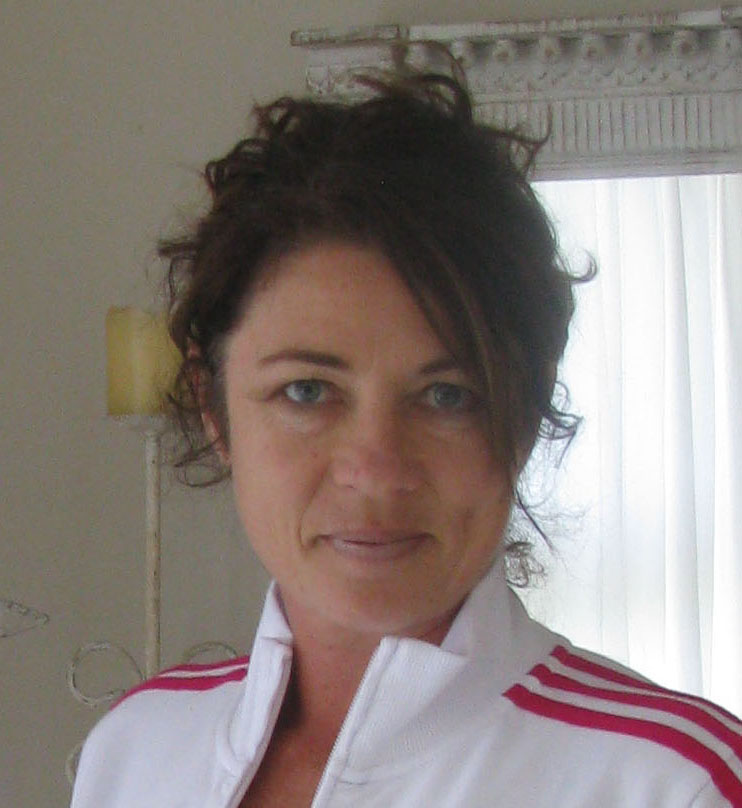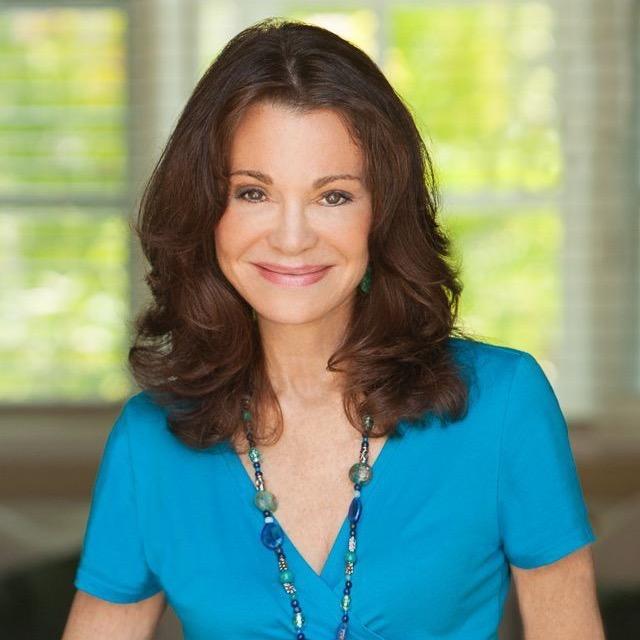Listen
Listen to this podcast or watch the video. CLICK HERE
Transcript
Top Takeaways
- Movement is an extremely important aspect of cancer treatment. That’s why Dr. Tom Incledon’s cancer healing facility is half gym, half medical office.
- If you don’t engage certain parts of your body, those areas can begin to lose function over time.
- Pain management during cancer helps patients improve their strength, energy levels, and overall health.
- Incledon creates environments that reduce inflammation, which reduces the threat to the nervous system, and allows people to move easier.
- Once people can manage these safer environments, they are put into more realistic environments, which conditions them to fight cancer more effectively.
- 100% of Dr. Tom Incledon’s breast cancer patients are survivors.
- Incledon believes most conventional breast cancer treatments are barbaric.
- Many cancer cells are highly gluconeogenic, which can make a Keto diet a poor choice during some cancer treatments.
- His team created a science based education system where, patients who have made mistakes in their cancer treatments, but we able to troubleshoot those mistakes, share their knowledge with newer patients.
- Outside of his practice, Dr. Incledon often sees the wrong levels of chemotherapy being administered.
- His team will recommend chemotherapy, if they believe it will help, and will go through the proper testing to choose the correct levels.
- Often times many factors other than radiation or chemo can lead to a cancer patient’s death, like inflammation, malnutrition, and neurological issues.
- Sometimes Dr. Incledon’s team will not initially treat cancer, and will instead focus on strengthening a patient’s depleted resources in order to bring them up to a point where they can handle treatment.
- People should have fun getting healthier is Dr. Incledon’s philosophy.
- Go to com/myersdetox to download Dr. Tom Incledon’s free Glycemic Load Guide, a guide that makes miscalculating the nutritional value of food impossible!
Wendy Myers: Hello everyone, my name is Wendy Myers. Thank you so much for joining me for the Myers DetoxPodcast. You can learn more about heavy metal detoxification at MyersDetox.com.
Wendy Myers: Toxic metals are one of the biggest contributors to fatigue. My name is Wendy Myers, and in my decade of research, I have discovered that toxic metals affect mitochondrial performance. Your mitochondria are little cells powerhouses that make your body’s energy, and toxic metals like arsenic, aluminum, thallium, and cesium, those poison enzymes that produce energy in your body. These toxic metals are found in your air, food, and water. They’re everywhere. They’re unavoidable in our environment today. Everyone has them in their body. The question is: What metals do you have and at what levels? Click the link below to take my quiz to evaluate your level of heavy metal toxicity.
Wendy Myers: And today we have a really, really good show for you. Dr. Tom Incledon is going to be talking about the questions you should be asking your doctor about cancer. So if you or a loved one have cancer, this is an amazing podcast that I want you to listen to because Dr. Tom Incledon is doing amazing things at his clinic with alternative means of addressing cancer. We’re going to be talking today about why exercise is so important, top five alternative pain treatments for cancer that everyone should know if you’re dealing with cancer, and different approaches as far as mental health, using a ketogenic diet if that’s really the answer if you have cancer, and just lots of really, really good information on the show today.
Wendy Myers: This is a really important show for me because my own father, as you audience may know if you’ve been listening to me for long enough, is that my own father, Marshall Greg Myers, passed away from his cancer treatment about seven, eight years ago. It was really a traumatic experience for me, and I was like many people that get the phone call that their parent or loved one or child has cancer and they have no idea about it or a cancer treatment or what diet they should be doing and start hitting Dr. Google and doing the research and trying to figure out what they can do to help themselves or help their loved ones, and there’s a lot of information on the Internet, there’s a lot of supplements to take and protocols to do and alternative cancer centers to go to, and then people tend, when they get the diagnosis, they get a lot of pressure from their conventional medical team or doctor to start treatment right away. There’s a lot of scare tactics that are used, and people just cave to the pressure, even why family members can have a lot of pressure put on them to do exactly what the doctor says, the conventional medical model of care for cancer, and it can be a fatal mistake for them.
Wendy Myers: And so I think it’s really important for people to educate themselves on health and cancer prevention and treatment so they’re armed with some knowledge if they are ever unfortunately given that diagnosis or a loved one is. For me, I started hitting Dr. Google and started trying to find ways to help my father, and it really was the genesis of me starting MyersDetox.com to try to help other people kind of wade through a lot of wrong information that can be on the Internet. So this show is part of that, part of what I do to in memory for my father and to really in his honor to help other people.
Wendy Myers: Dr. Tom Incledon is a world-renowned expert in human health and performance and is the founder and chief scientific officer of Causenta Wellness where he’s bringing a unique approach to health care and cancer treatment that’s never been done before. Throughout his career, Tom has revolutionized the way over 40,000 people have achieved their health and performance goals, and he’s seen it all. At Causenta, he’s pioneering a new data-based approach to cancer treatment that combines traditional and non-conventional practices with his team of medical doctors and consultants. Tom holds multiple degrees in management, nutrition, kinesiology, and a PhD in physiology. He’s a member of 30-plus scientific organizations, has trained at the Olympic level in weightlifting, and hosts a regular podcast, 1-800-Man-Show, I love that title, on health, fitness, and cancer treatment. You can learn more about him and his clinic and alternative cancer treatments at Causenta.com.
Wendy Myers: Tom, thank you so much for coming on the show.
Tom Incledon: Oh, my pleasure. I’m looking forward to it.
Wendy Myers: Yeah. So tell me a little bit about how you got into the health field, just so the listeners know a little about you.
Tom Incledon: Sure. So I started training for the Olympics, Olympic weightlifting, was hanging around a bunch of big, strong guys that were a lot stronger than me, and was fortunate to get involved with research with Dr. William Kramer, and while I was there at one point I was at a barbecue and got really sick, lost a lot of weight, and just saw just how awkward it was to go into a hospital and try to get better. I wound up losing close to 30 pounds over three days, and it was just a very horrible experience. And then when I got done, I realized, “Wow, this is not how it should be.”
Wendy Myers: So in your practice you deal with a lot of cancer patients. Why is it that you’re focusing on cancer?
Tom Incledon: When I was very young, I had a babysitter that I had a crush on and I was, I don’t know, five, seven, and she’d come over to babysit my brother and I, and one day she stopped coming. To the best of my memory, she was fine. There was nothing wrong with her, and then like two days later she didn’t show up and then I find out she died from a brain cancer. So at that point I didn’t really know much about cancer, but it was just really puzzling. How does someone that looked so healthy just be gone like in a day or two? As time went on, I just started meeting more and more people. I had a cousin, I had other family members that they would share with me the difficulties they were going through, but I was still too young to really do much about it.
Tom Incledon: And then when I got involved with research at Penn State, I started seeing that, wow, we could do a lot to help anyone with any kind of cancer. My focus of the research back then was strength training. Today, we’re so advanced in exercise. We’re doing things in magnetic fields with engineers and physicists, so a personal trainer at our center may have two master’s degrees and an engineer and a scientist alongside him. It’s very different than what most people imagine as personal training in a gym. At the same time, there’s an oncologist, a naturopathic doctor, and so we have a lot of cool super brains at one time working with each patient.
Tom Incledon: So we will do things like imagine all your strength training, you have a physical therapist over-viewing your movement pattern, and I’m simultaneously using amino acids intravenously while we’re doing some other strategies with magnetic fields and light therapy. We have patients gaining maybe 25 pounds of weight in two or three weeks if their cancer is very cachexic, so it breaks down tissue very rapidly, and so when people come in, they could be in a wheelchair, they’re too frail to walk. We have 100% of our patients are walking. No one stays in a wheelchair, and we joke that we’ll get ready to throw this out because you won’t be needing it again.
Wendy Myers: That’s awesome. That’s amazing. Yeah, and so talk to us about how does exercise and movement reduce your cancer risk. I find that interesting that you’re kind of working with cancer patients at a gym.
Tom Incledon: Well, it’s a gym because it’s friendly to movement and fitness. If you were walking around, you would see half the building is a gym that you could train any pro athlete, and the other half is like 40 medical offices. So we have the standard private room that a doctor could do a treatment or consultation with a patient, but then we also have a lot of open space so all the crazy stuff in my head I can actually integrate and do with people.
Tom Incledon: The reason why movement is so important is because if you don’t … Basically, the body works on simple principles of use it or lose it. So if you don’t engage all the different areas of your brain and controlling different parts of your body, there’s a loss of function over time, but because there’s not always pain or discomfort associated with it, it’s invisible. So a simple thing like everyone should be able to move their big toe independently of their little toes. When we test most adults, they can’t do it. We test children, they do it fine. So over the aging process, people tend to lose those connections.
Tom Incledon: There’s an excellent paper on the current issue of Scientific American that talks about how important movement is, so it’s not like we’re the only guys talking about it. Pretty high-level scientists are saying, “Hey, sitting is a risk for disease because you’re not moving enough,” and so what we try to do is everything that we do here is movement based.
Wendy Myers: Yes. Yeah, and so let’s talk about pain management. That’s a huge issue when people experience cancer and cancer treatment. So pain management during cancer treatment helps patients improve their strength, their energy levels, and overall health. So tell us about five alternative cancer pain treatments every cancer patient or their loved one should know.
Tom Incledon: Sure. So first, there’s a lot of mythology about pain. The common interpretation of pain is like if my elbow hurts, the problem is where I feel it, but those signals are really just nociceptors from the local area, so there’s like an input from this joint going to my nervous system to my brain saying, “Hey, there’s something going on here.” It’s a better indication that there’s a threat to one’s health or to one’s neurology. It’s not indicative that there’s actually a problem there.
Tom Incledon: So the first thing people should know how to do is how to distinguish what’s local versus systemic, and anyone can do a very simple test where you put your feet together, so like your toes and your heels are touching, you’re standing straight up, and palms are facing forward, and let’s say if you were doing this to someone or they were doing it to you, so you have an observer who’s just watching, and you have the person actually doing the test. And then they close their eyes and you just see, do they sway back and forth a lot and do they lose their balance? If they do, that indicates that there’s some disconnection between the same side cerebellum and the opposite side cortex, and many, many people have issues there, and the sad part is it’s kind of like a hidden problem, and then it gets ignored because no one feels anything, and over time it leads to more serious issues.
Tom Incledon: So when we have people come in let’s say with pain, whether it’s low-back pain or joint pain, many times we’ll see that it’s a problem there. Now someone with cancer pain, if we assume that the pain is from something other than drugs, like chemotherapy or something, then there could be other reasons why there’s pain. So we would start our model where we assess the nervous system from the brain down, and then kind of figure out where there’s dysfunction.
Tom Incledon: Once we see what’s going on, we may use things like electricity. So we get electrodes and we put one electrode on the area that hurts them, and then we have another electrode that we roam the body with and we find another location that produces a much higher pain signal to that person than the first location, and then we attach that electrode in that area, and then we take the other electrode and then roam it around. And this is where you find things like someone comes in and their back hurts them or they have a pain in their neck, and we find their issues are at their ankles, and then you ask them, “Hey, did you ever hurt your ankles?” And they’ll say, “No, never.” And then two days later they’re like, “Hey, when I was five or seven, I twisted my ankles really badly,” but you don’t expect someone to remember everything from 40 or 50 years ago.
Tom Incledon: So we have, that’s basically a neurological evaluation, we have electricity, and then we use a variety of devices in an area called pulse electromagnetic field therapy. Some people just call that PEMF, and essentially what we do is we try to get people to move in a magnetic field environment. So imagine like right around you right now if your shoulder hurt you I would have a magnetic field around your shoulder, you have your arm extended, and then you’re doing some shoulder circles in the field, and you would start out with the side that isn’t injured, so it’s like teaching the brain, “Hey, I can move in this field,” and then we would translate to the other side that maybe is injured or hurting, and the goal is one pain-free rep, and after we get one, then we’ll get two, and then we’ll go from there. But most people, usually we have them pain-free in five minutes or an hour depending on how serious it is and what’s going on, and then we get them doing more difficult tasks in the magnetic field.
Tom Incledon: And then we do things with light around them. So essentially we create environments that reduce inflammation and we reduce threat to the nervous system so that people could move easier, and then we take them out of those let’s say safe environments and we put them into more realistic environments. We’re challenging their balance, we’re challenging their body in some way, and it’s kind of like the brain or the nervous system remembers, “I could do this safely here,” and then we carry over that interpretation of safety into other environments.
Wendy Myers: Amazing. Yeah, it sounds like you guys are doing really cutting-edge things in regards to pain at your clinic.
Tom Incledon: It is. We’ve helped people with back surgeries in restaurants. Imagine you’re at dinner and your colleague is saying her back is killing them, and you’re like, “Well, let’s find out if I’m competent right now,” and then we help them.
Wendy Myers: Yeah, and so you work with a lot of breast cancer patients. Why are 100% of your breast cancer patients survivors? What are you doing differently in your approach to cancer with them?
Tom Incledon: Well, this is an observation I’ve made, and I don’t want to make it like a fact, but it’s just my experience. I think a lot of the conventional treatments for breast cancer for women are just barbaric. It’s kind of like take off a body part, take off that body part, take drugs for life. That’s kind of like the standard strategy. Any woman that goes through that usually has a perspective that, “I don’t want other women to go through the experiences that I did because it makes no sense. It’s illogical and so forth.”
Tom Incledon: It’s kind of like you think logically, “Why does anyone have to suffer this much or go through all this stuff?” When we have men a lot of times, my observation is that when a man has cancer, he feels maybe it makes him weaker or that it makes him less than a man, and so they’re a little bit more withdrawn or holding that information back, so I don’t have lots of men looking to share their story with prostate cancer or colon cancer or testicular cancer.
Tom Incledon: It’s actually very few, but we have lots of women looking to share their stories, and as we’re talking, a lot of times … I’ve uncovered two things that are really critical. One is that any person dealing with a deadly issue, they need to have a purpose in life, and many women connect with the fact that they have to live to raise their kids. Now, whether that’s the best purpose or not for someone on the inside, psychiatrists and psychologists may say you need other motivators, but love, kids, those are big motivators for a lot of people, so it’s hard to ignore that, whereas sometimes with men their connection may be more with things like, “I have to provide for my family,” which is more of a task than the same thing as connecting with a human.
Tom Incledon: So I think a lot of times women have more powerful motivators for living. Then when I look at the ability to follow directions, women just tend to follow directions better than men. Where a guy will talk to his buddy and the next thing you know he’s taking something that interferes with the treatment process, and he’s essentially using marketing to impact what he’s doing, and it’s his life on the line. So most people cannot distinguish marketing versus science. They make a lot of their decisions off marketing tactics not understanding that we’re all so unique you can’t read something on the Internet and apply that to yourself and then hope it works.
Tom Incledon: So there’s those types of variables behind the scenes that impact results. I think as all that stuff gets reconciled, it’s kind of why you see the things that happen, but with women, there’s a lot more research on breast cancer and there’s a lot more tools that we have available as well. So if you factor in a lot of options, a lot of tools, people that listen better, you kind of start to see how this kind of comes together.
Wendy Myers: Yes, yes. And so the ketogenic diet and fasting in general is a really hot topic for cancer treatment and prevention and improving a lot of other conditions. There’s a lot of stuff in the research. Is it really a way to prevent and treat cancer in your opinion?
Tom Incledon: Not by itself, no way. See the challenge is when studies are done, there’s no way to study every possible scenario. If you just looked at human genomics, so 22,000 genes let’s say in a microbiome, it produces a host of results that after we’ve tested 100,000 people, no two people respond the same way to food. So you can’t recommend a diet for someone with a disease without first understanding what’s going on inside them, and to do so I think it would be really poor to do that because I could tell you right now lots of cancer cells are highly gluconeogenic. So just because you think you’re giving a ketogenic from the outside, you have no control over what the cancer cells doing on the inside, so that’s just poor planning.
Tom Incledon: When we measure let’s say the enzyme pathways in cancer cells and see what their capabilities are, they can mutate and change over time. So even if let’s say right now we did all this testing and you’re on the best diet possible to fight a cancer in your body, as those cells mutate and change, they’re going to go in different pathways we can’t predict at this point in time, and so the results will be very different.
Tom Incledon: The way that anyone can test something, most people aren’t going to have access to the resources, is you find objective markers and then you just, no matter what diet you start with, whether it’s high carbohydrate, low carbohydrate, ketogenic or not, you would just measure the tumor volume or some cancer antigen or something in the blood that’s a marker, and then you just monitor it over time and see how it goes. And if the markers are improving, then you’re doing enough in the right direction. If the markers are not improving, then you have to reevaluate your approach.
Tom Incledon: Sometimes people might say, “Well, I don’t have access to labs. Based on where I live, I don’t have access to certain resources.” So then even when there’s not let’s say technology available, the way you could evaluate if something is working is that, one, you have an increased ability to eat a wider variety of food safely, and two, you have an increased and spontaneous activity. So healthy people move more, so regardless of the treatment, if it’s working for a disease process in terms of treating it, people will move more when they’re getting healthier versus that same person prior to starting that diet or something.
Wendy Myers: Yes, yes. Let’s talk about mental health. Mental health is the most untapped cancer treatment around, and it’s something that’s really never addressed in conventional medicine, not very often addressed with even functional medicine, but it’s such a huge factor on people’s physical health. Can you talk about that in cancer recovery?
Tom Incledon: Yeah. Well, I would say it has a big role maybe in every stage of cancer. So for example, most of the time the story I hear is, “I was healthy my whole life, and then I got stage four cancer.” I don’t hear anyone say, “Well, I was slowly getting worse.” And then when you say, “Well, did you have any objective monitoring?” And they go, “No, I never saw a doctor because I didn’t need to.” So most people wait until there’s a problem before they take action, and so when they finally take action, uncover that they have a pretty advanced metastasis of a cancer, they acknowledge that they couldn’t feel the cancer growing.
Tom Incledon: So with that fact established in their mind, now when they go forward and they do a treatment, I’ll here things like, “Well, this treatment worked, then something changed, and this other treatment worked,” and then they come see me and as I’m talking to them they’ll admit, “Well, I have cancer now in my brain and my pelvis and my spinal cord. It’s all over my body.” And I’ll say, “Wait a minute. I’m confused because you’re telling me you have cancer everywhere, but you just said this Rife machine or you just said this ketogenic diet, all this stuff worked. Well, how did it go from working to cancer everywhere? Where’s the disconnect?”
Tom Incledon: And then typically they pause and they go, “Well, I evaluate it as working because I felt better,” and that’s where the big gap is. Everyone knows you can’t feel cancer cells growing. They’ll even say that when they come in, but then their whole metric system of measurement is: How do I feel? Even when they’ve established … So there’s a major issue there mentally for most people. They’re conditioned to go by how they feel, even though they’ve already established that’s not good enough because that’s how they got here in the first place is they couldn’t feel the cancer growing.
Tom Incledon: So I’ve consulted with a lot of psycho-analysts and different behavioral specialists because what I see over and over again is I see people that are very let’s say healthy in terms of they could walk, they can move, they can go to the bathroom on their own, there’s no pain. I’m like, “Hey, this is the time we should get aggressive and do something when you still are fairly strong,” and then they’ll say, “Well, I don’t feel any pain.” So they’re basically going to wait, and about two weeks later they’re in a hospital getting a morphine drip and they’re confused and they can’t make a decision to save their life, and now the family is crying and going, “Well, I don’t know what to do,” and there’s nothing I can do at that point because they’re too far gone.
Tom Incledon: So there’s a disconnect in that people are conditioned to wait until it’s too late to do something. So when I bring in the behavioral specialist, what they shared with us, some of the assessments, is that in terms of changing behavior … We’re trying to create a science-based education system where we’re recording patients that made mistakes, but they were able to correct it and then still live, and then those patients share their story. “Hey, I waited too long and the cancer got worse, but luckily for me I was able to get in soon enough to get some progress.” And I’m paraphrasing a bit, but the idea is to help leverage experiences from survivors to help other people improve.
Tom Incledon: Most of the information that I see on the Internet is just really wrong. It’s kind of like, “Hey, take this essential oil and your cancer will be done,” so it gives a false sense of how easy it is to beat cancer. Anyone that’s actually working with cancer patients would tell you it’s not easy. It’s very difficult, hence why we have so many professionals in our organization that are participating in this.
Wendy Myers: And so do you guys work as a team like consulting on each case and bouncing ideas off each other about what’s the best approach and how to course correct?
Tom Incledon: Yeah. I mean, we have certain things like … we’re looking at certain cancer cell lines have certain enzymes, like NQO1 or catalase that are very protective enzymes within a cancer cell, so we have certain patterns like HPV-induced squamous cell carcinomas. Anyone that comes in with that type of cancer we pretty much know we’re going to help them and we’re going to help them quickly because we see maybe a 70% reduction in tumor burden in about two or three weeks. For other types of cancers, the cancer cells have different characteristics, and there may not always be an objective way of measuring those characteristics, so there will be some trial and error. So we’ll try something. If it doesn’t work, but we’re monitoring the patient so we can see it’s not working, and then we will change our approach.
Tom Incledon: So as an example, we may try five things. Doesn’t work, doesn’t work, doesn’t work, and then we make a tiny adjustment and then there’s a 70% improvement. You have your own business and you’re trying a marketing approach and it doesn’t work, you would not keep doing the same marketing approach, right? You would change it, and over time you’re going to get data on what doesn’t work and then it helps you hone in on a better strategy let’s say. It’s the same thing. If you have competent professionals and they’re monitoring an individual, wherever they start doesn’t necessarily matter because if you’re being monitored, they’re going to keep correcting and get to where they need to be in the end.
Tom Incledon: So a lot of times people are expecting a home run first time at bat. It never works that way. It’s more likely there’s a strikeout, but you learned something that you could change and then turn it into a home run at the end.
Wendy Myers: Yeah. Do you ever recommend chemo for any patient?
Tom Incledon: Yeah, absolutely. So, well, first I guess let me be clear. I don’t recommend anything medically because I’m an exercise scientist as really my background, but what I understand intimately well is biochemistry and physiology, and I have maybe five or six physicians here. So the way it kind of works is I handle the lab testing and I get my interpretation of what I see inside that person. I share that to the different physicians, and then they discuss the best options. Because there’s a model in the standard of care medicine, anyone let’s say with a certain cancer, they’re going to go in. They got to get the same drugs or regimen. Many times the way chemotherapy is at that level is just wrong.
Tom Incledon: So what happens then is people get it, they die, the family member goes, “Oh, the chemo killed them or the radiation killed them,” but they don’t really know all the other issues going on inside that person to really know why they died. Many of those patients have malnutrition, have incredible inflammation, and they have a lot of neurological issues. So when you got like 20 things wrong with you, how are you going to say which one killed them? That’s not really logical. Many of those patients could not handle high dose vitamin C either, so there’s a lot of other natural therapies that would be toxic to them because they’re so frail and they’re so weak everything is a threat.
Tom Incledon: So if someone were to come here, initially we may do no treatment at all for their cancer. Our initial focus may be strengthening all their resources that are depleted to get them to a point they could actually handle the treatment. That’s the distinction there. It’d be kind of like this. If I have really bad hip and knee arthritis and I go into a gym, a competent personal trainer doesn’t say, “Hey, let’s squat heavy,” because I can’t handle that. But now if my joints are healthy, they’re going to start me lighter and get progression there. But in most treatment centers, there’s nothing like that considered. There’s nothing like order effect or progression or any of those concepts. Those are exercise concepts that most of medicine is ignorant about.
Wendy Myers: Yeah. Very, very interesting. Would you ever recommend radiation, your team?
Tom Incledon: Yeah. To maybe clarify, on the chemo side, if you need a peashooter and it produces amazing results, no one complains. But if you need a peashooter and someone gave you the atomic bomb, there’s going to be a lot of damage. Many people get the atomic bomb when they need the peashooter.
Tom Incledon: The way that we work here, when someone consults with our oncologist, the first thing we figure out is what’s ideal for them. We just had a woman recently that had a small tumor in her lungs. We did a tiny little bit of radiation. It’s gone. She has no evidence of disease, and now she’s lifting weights and happy working out. The significance of that is it did not affect her life in any way. She could keep going shopping and seeing her friends and so forth.
Tom Incledon: What you hear a lot of times is like all the negatives of certain therapies, and what’s clouded in that maze of information is that there’s a lot of incompetence. Squatting with improper form it leads to injury. Doesn’t mean all squatting is bad. That’s common sense in a gym, but what you hear from mostly companies looking to sell other strategies, you hear all the negatives of chemo and radiation, but it’s a very unbalanced perspective. I could counter argue against any treatment the pros and cons of it, right? And so if you were to read only the cons of anything, you’d be afraid to do anything and get better because you might get hurt.
Wendy Myers: Yeah. Yeah, yeah, yeah. So tell us where we can learn more about you and your work and even work with you?
Tom Incledon: So go to Causenta.com, and then on the site there’s just a little form. They could sign up, get a free consult with one of the doctors there, and then after that they’ll hopefully learn enough to get started. There’s a ton of free information, podcasts, ebooks, and stuff like that, questions to ask your doctor. There’s two questions that really matter that could save someone’s life. First is: What will you do for the cancer in my body? And the second is: What will you do when it doesn’t work? Just those two questions have probably saved thousands of people’s lives. Most people ask questions like, “What’s your success rate?” It’s one of the dumbest questions ever because we already know that the fact that it can help you means nothing for me. We’re different people, and everyone forgets they could be in the 5% that don’t respond. They just look at the upside here and forget the other part. So you want to have this confidence that someone can figure out what’s inside of you, and that’s how you get the higher success rate.
Wendy Myers: Yeah, yeah.
Tom Incledon: Make sense?
Wendy Myers: Makes perfect sense.
Tom Incledon: Yeah. It’s kind of an indirect way of getting what you want, but we’ve seen a lot of people come here that have said, “Wow, I’ve never seen so many people smiling and laughing. Every other place I went they’re crying and it was so dark and gloomy.” My philosophy is I want people to have fun. You should feel better and have fun getting healthier. You should not feel like, “Oh my god, I’m going to this dark, dreary place.” You should be like, “I can’t wait to go to this place.”
Tom Incledon: A lot of the families that have come here have created all kinds of cool websites without our … They just did it on their own. We didn’t hire them or pay them a penny, and some of our most recent accomplishments we’re really proud of is we have one woman in her 70s, two in their 80s that have just gotten crazy strong doing all kinds of stuff, and for your female listeners, we actually treated varicose veins in one woman at the same time we treated our cancer. Excuse me. And it was really funny. Here’s one who’s 84, and she’s got a deadly blood cancer. It’s terminal, and I’m expecting her to ask about the cancer in her blood, and she’s asking me about her legs. I said, “Well, a woman has to have her priorities.”
Tom Incledon: One of the doctors asked me, “Hey, do you think we can do something about that?” I’m like, “I have no idea. I treat cancer cells. That’s a whole different area.” And so wind up trying some stuff, and we took pictures, and when you see the pictures, it looks like two different legs. It’s the same person. To this day, all the family talks about is how much better her legs look. It’s like the cancer is forgotten about. So anyway, that was kind of fun.
Wendy Myers: Yeah. It’s interesting you say about how a lot of cancer treatment facilities are very dreary, and I had that same experience when I with my father. When I went with my father to his chemo treatment place, and everyone there is very depressed and getting their chemo treatment and they know they’re going to be sick for weeks afterwards, and they had two dozen doughnuts sitting out for their patients to eat. We know that sugar feeds cancer. I was just shocked. I was just absolutely shocked by that. It was just so irresponsible.
Tom Incledon: Well, I’ll tell you. You asked earlier about the mental health stuff. I will have patients come here, and they make crazy phenomenal progress, and let’s just be clear that that’s like a miracle because there’s no way to know how well or how poorly someone will respond when you just start with them. So imagine now we have someone responding really fast, and at the same time we have someone not responding very quickly at all, and the person responding quickly will come in one day with Dunkin’ Donuts or some let’s just say less than desirable food, particularly in an environment where some people are struggling. It’s kind of like they’re rubbing it in their face and, “Hey, I’m doing well,” and I have to like, “Oh my god.” I have to take them aside and say, “Let’s cut back on some of this stuff.” But in their mind, it’s kind of like because they went from suffering and now they’re not suffering, in their mind it’s like, “Okay, I’m really beating this,” but there’s still a long way to go. Yeah, so we don’t encourage doughnuts here.
Wendy Myers: I think that’s a common human condition. You’re making progress, you’re doing good, and you sabotage yourself. We all know that. I’m familiar with that. Yeah. Do you have any books or programs or anything you’d like the audience to know about?
Tom Incledon: The free ebooks we have online, I would definitely encourage people. I’ve written over 100 books in the areas of sports nutrition and exercise science years ago, but the way we’re progressing now, every morning we’re making discoveries that no one else has discovered before, so it’s kind of like I’m trapped in this sort of space where if I write it down and tomorrow I know we’re going to be doing it differently, at what point do we commit and say, “Hey, read this”? What I’m hoping to do at some point just do a series of videos that we could show people here’s kind of where we started, here’s where we are now.
Tom Incledon: So as an example, right now we have brand new technology and it measures real-time oxidative stress markers in the blood, and the significance of this is now I can do any therapy and I can see if we’re getting the production out of the products that we’re looking for, and we can evaluate therapies on the spot. And then the next step would be I want to be able to put an HD camera inside of people to see: Am I killing cancer cells in real time? So when we get to that point, then I’m going to be looking at how do I treat cancer for free. So what’s very different about our business model is we’re going to make so much money from educating physicians because no one ever thought about combining all this stuff the way that we have, it’s far more profitable than actually treating cancer. So when we make that adjustment into our business strategy, we’ll be treating people for free, and then it’s going to question: Why would I do radiation or chemo? We do have certain cancers we can treat without radiation and chemo, but not all cancers.
Tom Incledon: Right now, most people go that route because insurance covers it, so they don’t question how expensive it is because it’s someone else paying for it, but when they look at the side effects, like if you know, hey, radiation is $8,000 to $30,000 and I have all these side effects afterwards and now I got this free option, they got to really rethink through some of this, especially when, oh, by the way, our side effects are you’re stronger, less wrinkles, maybe got rid of your varicose veins, you have all this other stuff. It’s becoming a no-brainer.
Wendy Myers: Yes. Yes. Well, thanks so much for coming on the show and talking about this. It’s a really important subject to me because my father passed away from his cancer treatment, and he was pretty far gone at the time he started them also, but it’s just very, very an important topic to me to educate people not only about cancer treatment but thinking about improving your health before you get the diagnosis, detoxing your body of heavy metals and chemicals before you are diagnosed with something, before you start feeling bad and getting tired. You want to be working on your health because we know that there are so many things working against our health that the clock is ticking. At some point if you’re not being proactive, you may very well end up with a diagnosis. So I think that’s a very important thing for people to be thinking about, about prevention.
Tom Incledon: Sure. Yeah, absolutely.
Wendy Myers: Yeah. So, well, thanks so much for coming on the show, and why don’t you tell us where your website is where we can find you?
Tom Incledon: Causenta.com
Wendy Myers: Fantastic. Well, thanks to you for coming on. And everyone, my name is Wendy Myers. If you want to learn more about heavy metal detoxification, you can go to MyersDetox.com, and thank you so much for tuning in today and for just tuning in every single week. It’s just really a pleasure to interview all these world experts on health and learn so much myself and educate you guys at the same time. It’s just really a privilege, and thank you for making that happen for me. And everyone, go to MyersDetox.com to learn more about detoxification, and I will talk to you guys next week.

